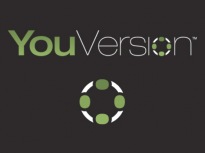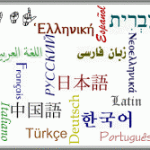 Thirty Days ago I, along with Heath Mullikin and Jeff Brady, began the Bible in 90 Days Reading Plan from YouVersion. The YouVersion cloud Bible and applications deserve their own post, so for now I will just say that I use it, and you should check it out. For this post, I will concentrate on the benefits and challenges I have seen during the first third of this reading plan.
Thirty Days ago I, along with Heath Mullikin and Jeff Brady, began the Bible in 90 Days Reading Plan from YouVersion. The YouVersion cloud Bible and applications deserve their own post, so for now I will just say that I use it, and you should check it out. For this post, I will concentrate on the benefits and challenges I have seen during the first third of this reading plan.
Although I have read the whole Bible numerous times, I have never completed a read through the Bible in a year plan. For me, that just took too long. In a 90 day plan, I make significant progress every day, but that progress comes at a cost. The reading assigned for each day ranges from 10 to 16 chapters. When not on a reading plan, my daily Bible reading may range anywhere from one verse to maybe 10 chapters. I usually read until I hit a detail or theme that I would like to meditate upon, but in this program I see the big picture instead of searching out the details.
 I regain a sense of the whole story of God by reading at this pace, and some of the larger literary structure pieces have come together. As an example, I was taught that the story of Ruth takes place during the time of the Judges, but I had not read Ruth and Judges back to back in some time, and perhaps never over just three days. The final chapters of Judges and the book of Ruth all set up the kingship of David. Judges 17-21 does not tell the story of any judge of Israel, but instead the story of a Levite priest for hire (setting up Samuel as a better priest and prophet), a story of evils in the Benjamite tribe (setting up King Saul the Benjamite as a failure), and then the story of godly Ruth and Boaz (setting up the kingship of David). It is wonderful foreshadowing.
I regain a sense of the whole story of God by reading at this pace, and some of the larger literary structure pieces have come together. As an example, I was taught that the story of Ruth takes place during the time of the Judges, but I had not read Ruth and Judges back to back in some time, and perhaps never over just three days. The final chapters of Judges and the book of Ruth all set up the kingship of David. Judges 17-21 does not tell the story of any judge of Israel, but instead the story of a Levite priest for hire (setting up Samuel as a better priest and prophet), a story of evils in the Benjamite tribe (setting up King Saul the Benjamite as a failure), and then the story of godly Ruth and Boaz (setting up the kingship of David). It is wonderful foreshadowing.
With each day’s reading, I have tried to come up with a tweetable statement of summary or learning. Those tweets can be followed at my Twitter feed and I am using the hashtag #90Days. Summarizing 16 chapters in less than 120 characters is another way I am going for the big picture. In addition, the daily tweets hold me accountable for my reading. I also am encouraged when I read a post from Heath or Jeff.
This reading plan goes through the Bible from Genesis to Revelation. Normally, I read a bit more chronologically or thematically, and go back and forth between the Old and New Testaments. When I read 1 & 2 Samuel, I often also read the Psalms simultaneously. In the same way, I often read 1 Kings with Proverbs, followed by Ecclesiastes and Song of Songs, and may jump back and forth between 2 Kings and Chronicles with the writings of the Prophets. When I read in Daniel 9:2 that Daniel was reading the prophet Jeremiah, if I have not recently read Jeremiah, I make sure I read it next. Next time I may look for a chronological reading plan.
I found Deuteronomy difficult to read, as I felt I had just read all this Law. I have a feeling that Chronicles will also have a similar feel, but so far Chronicles moves at a much faster pace than Deuteronomy, or Samuel and Kings. As much as I love the Psalms, I have a feeling that going through the wisdom literature at this pace will be a drag, and I will not feel like I get enough time with the minor prophets, but we will see. Regardless of the book of the Bible, I find after my Bible reading for the day I have a difficult time picking up something else to read or spending time writing. For me, cutting down the amount of Bible reading, so that I can include other Christian reading, meditation, and study, strikes a better balance than reading only the Bible until the eyes and mind is weary. Still, I have enjoyed my time in the Scripture this past month, and look forward to the next 60 days.
©2012 Paul Tillman






